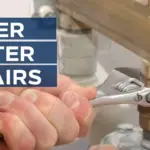Fire safety should be the highest priority in any building, particularly one that houses people or offices. But how can you tell if your building has fire hazards? Here are some of the most common causes of fire hazards and what you can do to mitigate them or remove them altogether from your place of business or home.
How to spot electrical fire hazards?
Not all electrical issues are caused by humans—you might have a problem with your circuit breaker, for example, or faulty wiring that’s been damaged over time by things like water damage. But even if you can’t see it, there could be something not working quite right with your electrical system: To make sure everything is functioning properly, regularly inspect your electrical panel and any fuses or breakers connected to it; if you notice anything unusual or concerning, call an electrician immediately.
Knowing your neighbors can save lives:
Knowing your neighbors can be critical for keeping you safe during a fire or other emergency, so it’s important that you make sure everyone on your floor or building is aware of what’s going on and knows how to protect themselves. These few simple steps can ensure that you stay as safe as possible. Adopt-A-Floor: If you live in an apartment complex, chances are you don’t know most of your neighbors. To help build community and safety awareness around your home, consider adopting one floor in your building (or even one unit) and welcoming new residents who move onto that floor.
How smoke alarms and sprinklers protect you?
Smoke alarms and sprinklers are two essential safety devices for your home, but do you know what they do or how they work? If not, keep reading. We’ll explain it all for you! Plus, we’ll tell you about some important rules that will help ensure that both of these lifesaving devices stay up to date and functioning properly. First things first: let’s take a look at smoke alarms.
A working smoke alarm is an important safety feature to have in any room of your house—and any business office as well. So if yours aren’t working anymore, take them down and replace them immediately!
Where fire safety begins at home?
Fire safety begins at home, so make sure you’re aware of any potential hazards there. Check for smoke alarms (and remember to change their batteries regularly) and keep anything flammable away from your stove and heating units. If you notice a leak or strange smell coming from these appliances, contact a professional as soon as possible. They may just need some new parts to get running again—but they could also be warning signs that something more serious is going on.
When an electrical fire occurs, take action right away?
Any type of fire—no matter how small—is dangerous, so don’t try to put it out on your own or let it burn itself out. If you can’t find a fire extinguisher and live in a building with common hallways, alert everyone else in your building by knocking on doors and sounding an alarm.
Don’t put yourself at risk during a fire alarm:
Fire alarms are a common feature in buildings across America, and for good reason: they can help save lives. However, if you’re working or sleeping at night when your building is on fire, a fire alarm can also put you at risk of injury or death because it may force you to flee from your apartment through dangerous smoke-filled hallways.
Also Read: Gypcrete Vs Concrete – Difference – Uses
Causes of Fire Hazards
- Faulty electrical wiring:
Faulty electrical wiring is one of the most common causes of fires, accounting for almost 40% of all fires. Make sure you’re checking your electrical cords, fuses and switches. If something doesn’t look right, get it checked out. And, if you need to replace your electrical wires or install new ones entirely, hire a licensed electrician who knows what they’re doing to make sure everything is up to code and safe.
Poorly stocked up fire extinguishers:
In a serious fire, it’s likely you’ll only have time to use one extinguisher, so make sure it’s in full working order. Check your equipment annually and replace it when necessary.
Extinguishers were placed too high:
One of the first things you learn in your standard fire safety training is that it’s important to keep extinguishers at an accessible height. This way, if you ever have to use one, you can be sure you can handle it. In fact, many experts even recommend having them within arm’s reach for easy access in case of emergency.
Heavy smoking inside the building:
Smoking is an absolute no-no if you are running a commercial building or home. The smell and residue left behind will catch a spark and set your entire establishment ablaze, just like it did here. Even if you’re not smoking in your workplace, always remember to stay vigilant and be careful to always clean up after yourself, as well as open doors when leaving for more than a moment. No matter how seemingly small of an accident can turn into something disastrous in seconds. Safety first!
- An overstuffed dumpster outside:
Everyone knows you shouldn’t smoke in bed or throw your cigarette butts out of car windows, but there are plenty of other careless activities that can have similar—if not more serious—consequences. For example, if one was to leave an excess amount of rubbish in a dumpster outside their office, then it could very well lead to a building fire.
A lot of combustible items inside:
Thanks to a few too many candles, smoking materials and cleaning chemicals, someone accidentally started a fire inside of their apartment. While all of these materials are dangerous when near open flames, we’re not just talking about candle wicks or smoldering cigarettes; common household items like paper and plastic can lead to a big blaze if not disposed of properly. Leaving such combustible materials lying around is likely to lead to a nasty fire or even an explosion. You should get rid of them immediately!
Lack of emergency exits
You have to have at least two exits from every room in your building, says James Stanley, author of The Landlord’s Legal Handbook. If people are trying to get out of a burning building, they don’t have time to find more than one way out. So what does that mean for your business? Consider adding an emergency exit (or two) near where you host meetings, and make sure employees know how to use it.
An overcrowded elevator
When an elevator car is overcrowded, it is difficult for people to enter and exit quickly. This can lead to a dangerous situation where everyone inside has only one chance to escape when there is a fire or other emergency.
Sprinklers were broken
The sprinklers in a building are extremely important. They help put out fires and contain them to a certain area if they do ignite. It is crucial that these systems work properly, and when they don’t, it’s usually because someone hasn’t been keeping up with them or has vandalized them.
The alarm was disconnected and/or did not go off
The alarm not only acts as a warning to people that there is a fire, but it tells people exactly where it’s coming from. When an alarm goes off, everyone should immediately get out of their office and head to safety outside of the building. Sadly, some people disregard these alarms because they assume they will be notified by their company if there really is a fire. This is not always true and has resulted in many employees losing their lives or having severe burns.
Importance of Fire Monitoring in Buildings
Fire hazards can be significantly reduced with proper monitoring systems in place. Whether it’s a residential or commercial property, it is essential to ensure safety with fire monitoring by using advanced alarm systems, smoke detectors, and real-time monitoring solutions. These systems help in early fire detection, allowing timely evacuation and emergency response to minimize damage and casualties.

















